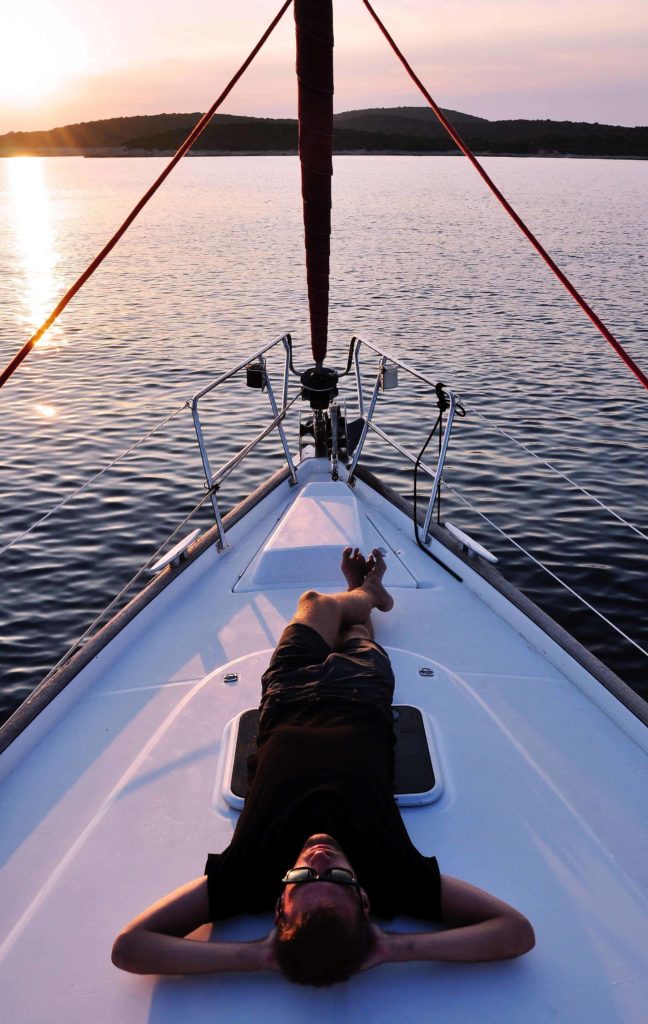Sailing. The word conjures up images of sparkling water, blue skies, and sunshine. Christopher Cross immortalized this popular activity in his 1980 song “Sailing”.
“Well, it’s not far down to paradise, at least it’s not for me. If the wind is right you can sail away and find tranquility. Oh, the canvas can do miracles, just you wait and see. Believe me.”
Those are some big claims- so we pulled anchor and sailed windward into the topic.
Check out our beginner’s sailing starting guide with safety tips (on NOT tipping), sailing terms, types of sailboats and more.
All hands on deck, and read on to learn the ropes.
Health Benefits of Sailing
Yes, that’s right- sailing is good for what ails you. According to the World of Sailing, there are numerous health benefits of sailing. Here are a few of them:
Muscle Strength and Increased Physical Endurance
Sailing entails a lot of hoisting and lowering of heavy canvas sails to move the vessel. This tones and builds muscle in the shoulders and back. Add this fitness routine with proper diet and there’s a greater chance of weight loss.
Weight Loss
Sailing incorporates most muscle groups. When coupled with a healthy diet consisting of whole foods, sailing is a unique opportunity to enhance weight loss goals, according to MySailing.
Cardiovascular Health
Routine physical activity decreases the risk of cardiovascular issues, and sailing is no exception. Regularly ‘sailing the seas’ may assist with weight loss and control obesity. This lowers the chances of cardiovascular issues.
Mental Well Being
Being near the water makes us happy. We instinctively know this, and research agrees. A 2012 study published in Health & Place found this: “Proximity to the coast was positively associated with good health, with a small, but significant increase in the percentage of people reporting good health among populations residing closer to the sea.”
Being near the water can:
- The sounds of the sea, the rocking movements of the waves, and the music of the flapping and twisting sails can influence brain waves. This is similar to meditation.
- Enhance concentration: Multi-taskers often have noisy, exhausted minds. The constant demands of the sailboat focus the mind on the task at hand, releasing other worries for a time.
Enhanced Flexibility
Pulling lines, hoisting sails, and other sailing tasks require the entire body to participate. These activities keep the body adaptable and agile. Increased flexibility is essential to any weight loss plan. With increased flexibility, there’s a chance you’ll recover faster. Add in a healthy diet to your weight loss plan and you’ll never leave the water.
Organizational Skills
“Shipshape” is a term that comes directly from sailing, and reflects the needs for everything to be neat, well cared for, and stored in its proper place. The need to be well organized on deck can transfer these good habits to daily life. Many often find a renewed sense of organization and orderliness after taking up sailing.
How to Get Started with Sailing
Sounds good, right? The next daunting question is, “How do I get started with sailing?” According to Boating Lifestyle, sailing isn’t as difficult as you might think.
Most people begin sailing following just a few days of instruction. Finding a class on the basics of sailing isn’t challenging; anywhere there is water close by there will be classes. The America Sailing Association (ASA) even offers a free online sailing course for beginners.
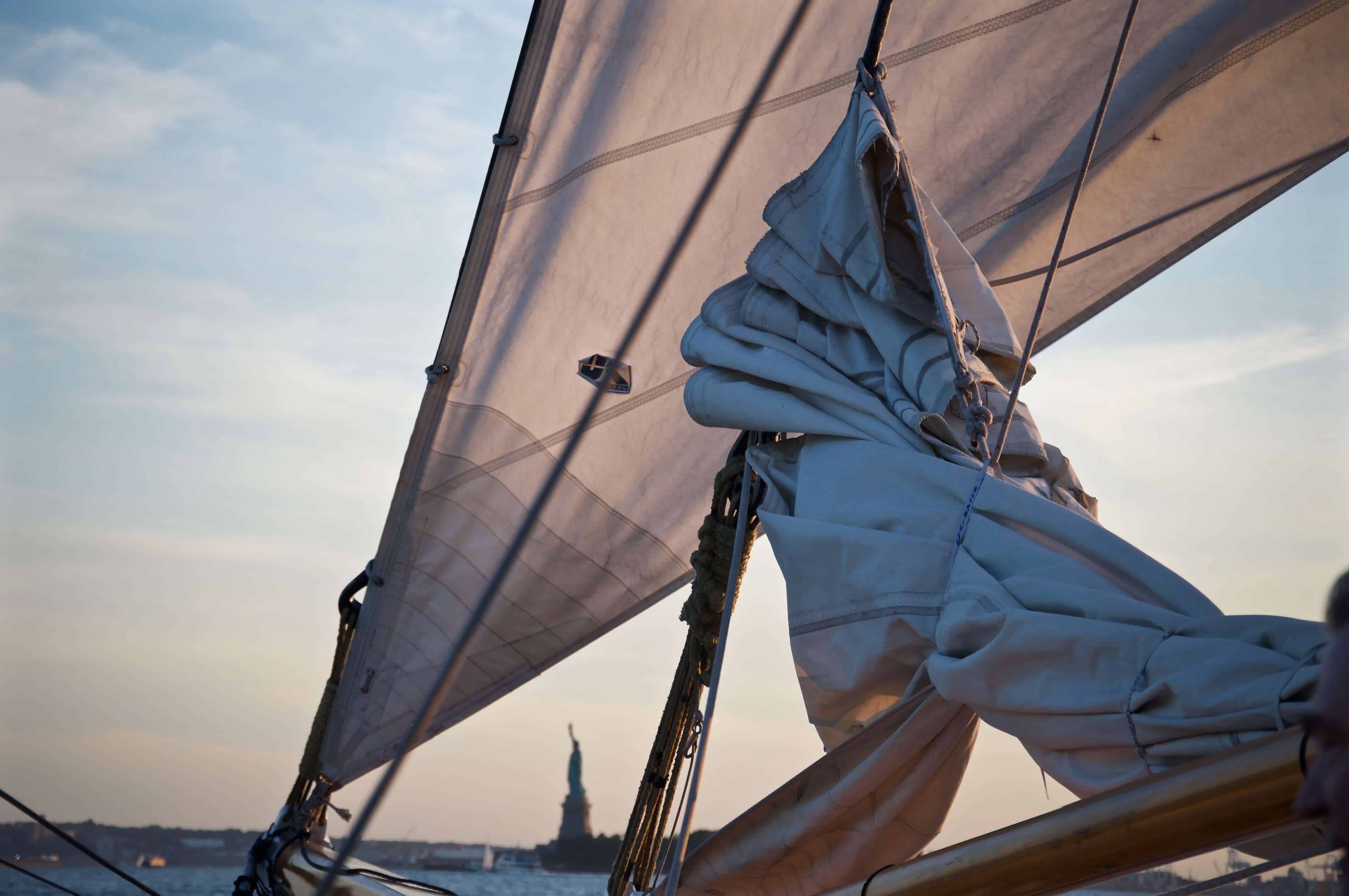
Becoming an expert sailor takes years, and there is always something to learn. But getting on the water in your sailboat, after some good instruction, is the best way to grow those new-found sailing skills.
The three most basic skills that beginners need to learn are:
- Know which way the wind is blowing: Sounds simple, but even experienced sailors are always keeping an eye on their “telltales”. These are pieces of ribbon or yarn that are tied in the boats rigging and keep sailors aware of wind direction
- Steer accurately: This skill takes a few minutes to learn, and perhaps a few more to perfect. But “trimming the sails” (adjusting them) cannot be done properly without the skill needed to steer your boat in a straight line
- Recognize a trimmed sail: Knowing when you’ve got that sail just right is critical. Moving the “sheet” (sail control line) until the sail stops fluttering indicated a “trimmed sail”. This is one of those constant tasks of sailing, and each time the boat changes direction the sails need to be re-trimmed.
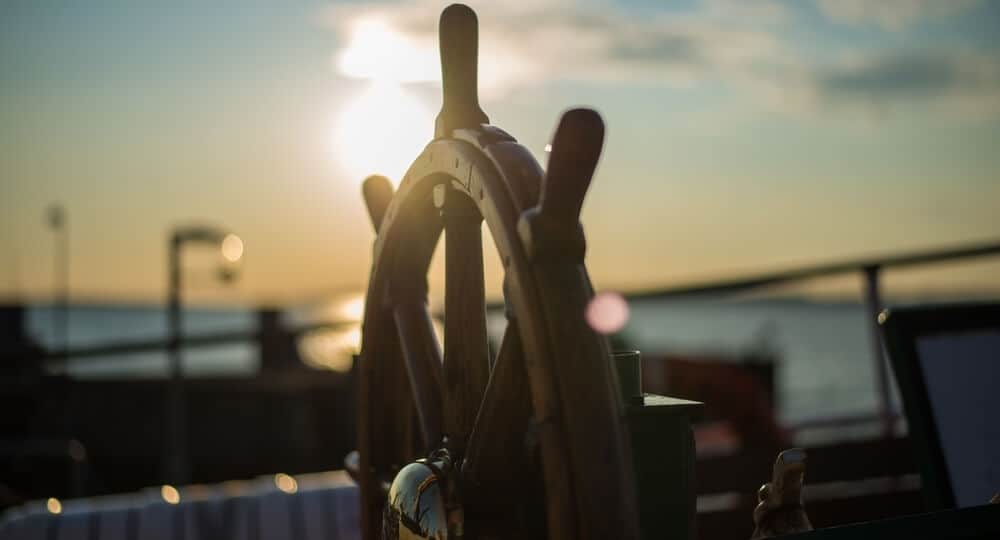
Is Sailing Safe?
Sailing seems quite intimidating to a total landlubber, but in fact, there are surprisingly few sailing accidents and issues when approached with common sense.
Statistics show that for every 100,000 people, five will die in a boating accident, vs. 11 who will die in an automobile accident.
Additionally, most boating accidents involve:
- Boats with motors
- Failure to have/wear lifejackets
- Consumption of alcohol
Let’s take a closer look at some of the safety concerns of beginning sailors:
Capsizing
Sailboats are very difficult to “capsize”, which is the dreaded tipping over. Sailboats are designed and built to resist capsizing. In fact, a sailboat’s mast must be 30 degrees under water for it to give up trying to right itself. That would need to be a heck of a storm.
AAAAARRRGGG! What about Pirates, Matey?
Pirating is a genuine fear amongst boaters- and for good reason. In 2010 there were a whopping 688 piracy events. Maritime piracy laws have changed and gotten much tougher, and the incidence of piracy dropped by almost half that number by 2015.
Person (or Pet) Overboard!
What happens if someone falls off the boat? Well, it seems that this is way less common than you may fear. However, being hit by the boom or slipping off the deck in rough waters can happen.
Life vests are quite advanced now, with many styles that inflate automatically when they hit the water. These lightweight, technologically advanced vests make overboard events much less dramatic. The main points concerning life vests is having them onboard, and then actually wearing them.
Don’t forget life vests for the 4-legged fam, too. Dogs and cats are not natural swimmers, especially when frightened or injured.
Sharks
The thought of becoming a part of a sharks diet is totally revolting. However, even counting shark “hot spots”, there are only an average of 5 shark attack fatalities each year.
According to Tracking Sharks, “The majority of shark bites are clustered on the Eastern coast of Florida. This is due to rough surf which creates limited visibility for the sharks. Of course with surf comes surfers. More people in the water leads to the possibility of more negative interactions.”

In 2017, Tracking Sharks recorded nine fatal shark attacks. We are far more likely to die in a car wreck than to get eaten by a shark. If this still doesn’t quell your fears, here are a few shark attack prevention tips:
- Know the area: If possible, simply avoid sailing in regions that are known for a high concentration of sharks. There’s an app for that- no kidding- get it here.
- Don’t wear yellow: Apparently, sharks are attracted to bright, neon yellow- so much so that this color has become known as “yum-yum yellow”
- Shun the shine: Don’t wear shiny jewelry that might mimic the flashing of fish scales
- Don’t splash: If you do fall overboard, avoid panicked splashing and shouting, as flailing may signal ‘snack’ to any nearby shark
Sharks are not as safe as humans are, though. Humans kill about 100 million sharks every year, according to National Geographic.
For more on sailboating safety, visit these sailboating sites:
- How Safe Is Sailing? – Sailing Virgins Blog
- How Safe Is Sailing, Really? – Sailboat Story
- Guidelines for Staying Safe on Your Sailboat – ThoughtCo
- Safety – United States Sailing Association
- SafeSport & US Sailing – United States Sailing Association
Getting Lost
Navigation systems on modern boats, and maritime charts are pretty advanced these days. Additionally, navigation skills are taught in all beginner boating safety classes. Finally, there are several excellent apps for navigation. Staying found is easy, it seems.
What Sailboat to Buy?
OK, you have taken the classes, decided that sailing is for you, and now on to the big step: buying the boat. What sailboat is the best bet for beginners?
According to the American Sailing Association (ASA), a smaller, more responsive boat makes sailing easier to learn. The ASA’s beginner courses are taught using 22-foot sailboats. These boats are bigger than a dingy, but still a manageable size for feeling how the wind and water affect the sailboat.
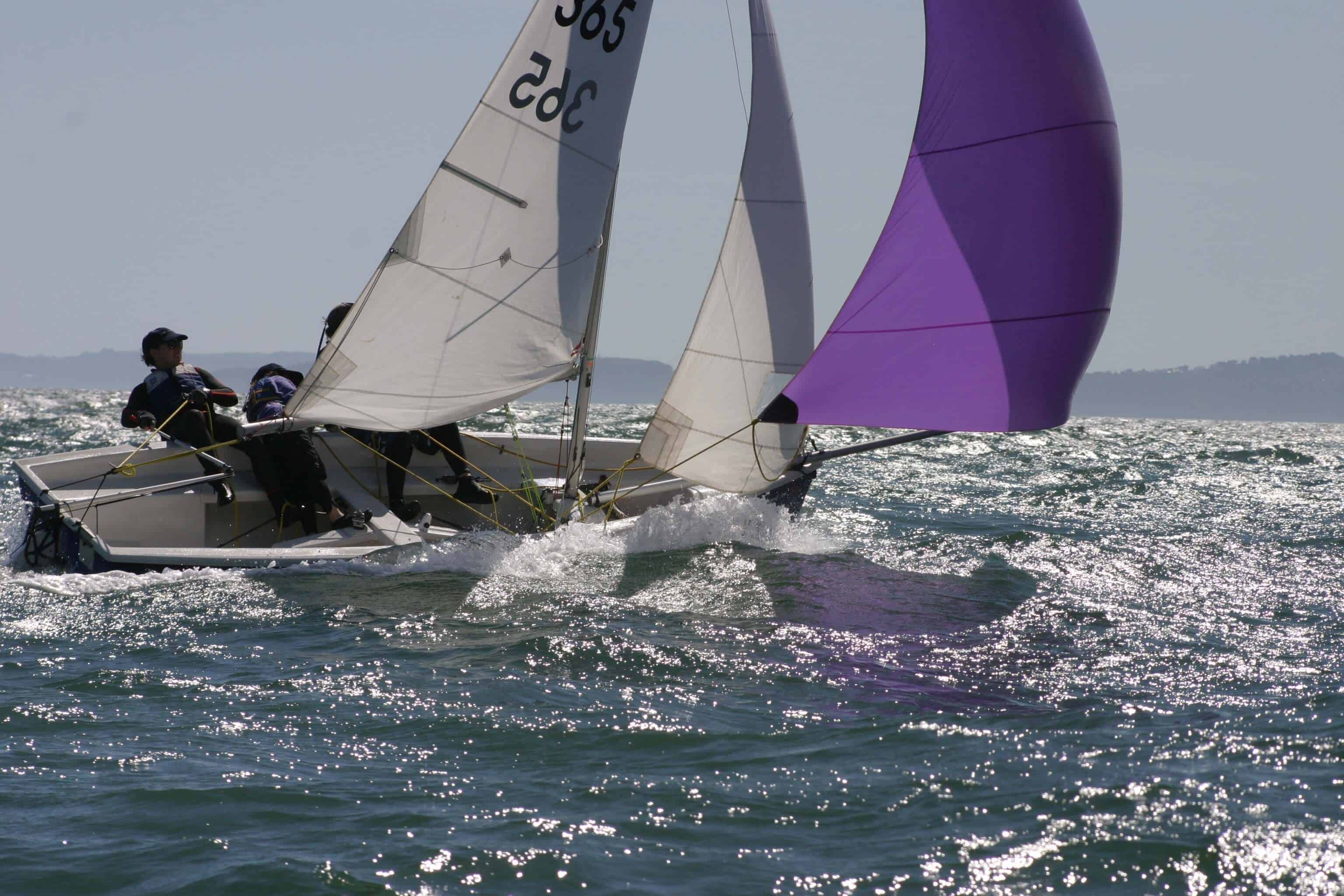
Discover Boating, however, warns against buying a boat that your family will outgrow too quickly. A 22’ to 27’ smaller keelboat is safe, roomy and decently priced. It is less likely to capsize than a smaller boat as well. There is room for guests and gear, and a ‘head’ (bathroom) and small kitchen is often included as well.
Even so, over time you may want more speed and space than your first sailboat can provide. With this in mind, it is great to research what sort of smaller boats sell well in your area. This way, when you are ready to move up, there will be plenty of interest in your sailboat, making it easier to sell. Here are some additional resources on buying a sailboat:
- Buying a Sailboat: Boat Finder & Sailing Basics | Discover Boating
- Five Starter Boats that are Perfect for the Beginner Boater – boats.com
Basic Sailing Terms
Like any new skill, knowing the lingo is half the battle in navigating the learning curve. Knowing basic boating vocabulary prior to taking boating classes will make learning easier. Here are some terms you should know before your first launch in that new sailboat, reported on DiscoverBoating:
- Aft or Stern: The back of the boat
- Bow: The front of the boat
- Port: The left side of the boat, when facing the bow (front)
- Starboard: The right side of the boat, when facing the bow (front)
- Windward: the way the wind is blowing
- Leeward or Lee: The opposite of the way the wind is blowing
- Boom: The horizontal pole which swings around when turning the sailboat
- Rudder: Flat piece under the boat that steers the ship. The rudder is controlled by a wheel or other steering mechanism located aft
- Tacking: Turning the BOW of the boat so that the wind moves to the opposite side
- Jibing: Turning the STERN of the boat so that the wind moves to the opposite side
Want more? Check these out:
- Sailing Terms You Need To Know – American Sailing Association
- Glossary; Over 500 sailing & nautical terms defined. – School of Sailing
- Sailing Terminology – Your Guide to Sailing Terms – Discover Sailing
- Sailing For Dummies Cheat Sheet – dummies
What to Bring When Sailing
Being a good and safe sailor means having the proper gear on board. Here is a good list of necessary gear for crew and vessel:
For the Crew
- Life jackets- don’t forget jackets for the pets, too
- Jackets, rain gear, swimming suits
- Shoes with a non-slip bottom
- Sun safety items including sunscreen, glasses, and hats
- Gloves for handling lines and sails
- Tie-backs for long hair
- Food and water that fits within their specific diet
- Necessary medicines, in excess of the time you plan to be at sea
- Marine forecast equipment- the weather can change abruptly
- Waterproof backpack or dry-bag for critical items
For the Vessel
This list is for a 30’ keelboat:
- Additional line
- Fenders
- Spare parts and necessary tools
- Plenty of fuel or extra paddles for boats without engines
- Anchor and chain/line
- Binoculars
- Compass and necessary charts
- Bucket and rope- for bailing and many other possibilities
- Boat hook
- All items required by the USCG for your type and size boat
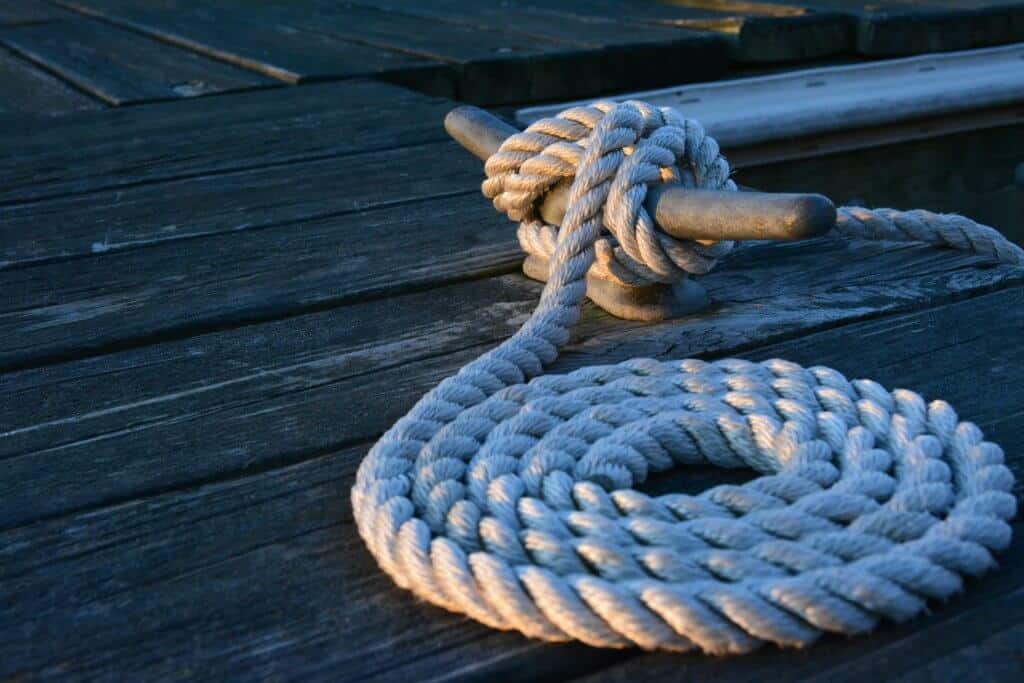
A handy chart supplied by Boatsafe.com outlines all the minimum items required by the USCG for recreational boats. The requirements differ by the size of the boat. Some states require additional items, and boaters should be sure to check out state boating laws as well.
Is Sailing Affordable?
Many people think that owning a boat of any kind is an expensive undertaking. However, if you can afford another car, you can probably afford a boat.
- Sailing on a Budget: 6 Ways to Avoid Breaking the Bank – boats.com
- Sailing is the cheapest fun you can have; the numbers prove it
- Affordable Boating – Discover Sailing | Sail America
- The Affordable Yacht; How To Buy And Sail A Sailboat On A Budget
The boating market is chock full of used, older sailboats that are in perfectly good condition for a landlubber wanting to convert to a sailor. Fiberglass never wears out, so with lots of new boats flooding the marketplace, used boats offer lots of choices at reasonable prices.
How Much Does a Sailboat Cost?
Cost to Purchase
Of course, the cost of your sailboat will be determined by both the size and the age of the boat. Beginning sailors who plan to purchase a 22’ keelboat can get a good quality used sailboat for around 10K- about as much as you might expect to pay for a decent used car.
There are plenty of websites dedicated to used and new boat sales. You can browse the costs online, and decide which boat best matches your budget. Check out these websites:
Before buying, checking your boat’s value is a good idea. The NADA Boat Guide allows shoppers to “research new and used boat pricing, specs, photos and more for anything from power boats to personal watercraft”.
If you want to lower the cost to purchase, you could consider buying with friends, in a partnership.
Partnerships
Some aspiring boaters purchase their boats in partnership with friends. This lowers the cost of purchase and maintenance. It also gives aspiring sailors a chance to find out if the boating lifestyle works for them in the long term. However, it is best to be sure that you have a tested and true relationship with potential partners. Disagreements are certain to occur, and discussing budgeting and maintenance prior to partnering is a good idea.
In today’s litigious culture, having things clearly expressed in a written contract is strongly recommended. Writing out a formal agreement will open up lines of communication. Questions about liability for damage, scheduling shared time, and upgrade purchases (New sails? New dinghy?) need to be addressed in advance. Good fences make good neighbors, as the old saying goes.
Costs of Sailboat Gear
OK, you already thought about the stuff that goes on the boat, like the life jackets and other USCG required items that we covered earlier. But it is worth mentioning a few other items you may not think about when calculating the costs of boat ownership. Let’s cover a few here:
- Classes and Licensing: Most states require both, and of course they will cost you
- Trailer cost and maintenance costs: Will you be transporting your boat with a trailer? If not, what will the cost of transport rental be?
- Watersport equipment costs
- Initial costs to register your boat, including taxes
- Rowboat/dinghy to get to your boat if moored
Costs of Sailboat Maintenance
Of course, there are maintenance costs associated with boating. Just like your car, a boat needs to be insured and taken good care of. Experts suggest that maintaining your boat is about 10% of the purchase cost. Here is a list of annual expenses that you should consider while budgeting for your new sailboat:
- Insurance: If you finance your boat, the lender will require insurance. It is a good idea to have at least basic coverage whether or not you are financing
- Winter storage costs: Cover? Top? Inside storage? Winter storage in cold climates may also include winterization
- Repair/replace costs: Sails tear, rigging needs to be replaced, lifevests rip. Keep these items in mind.
- Cleaning costs: saltwater boating can be harsh on the exterior of your boat, and regular cleaning is required
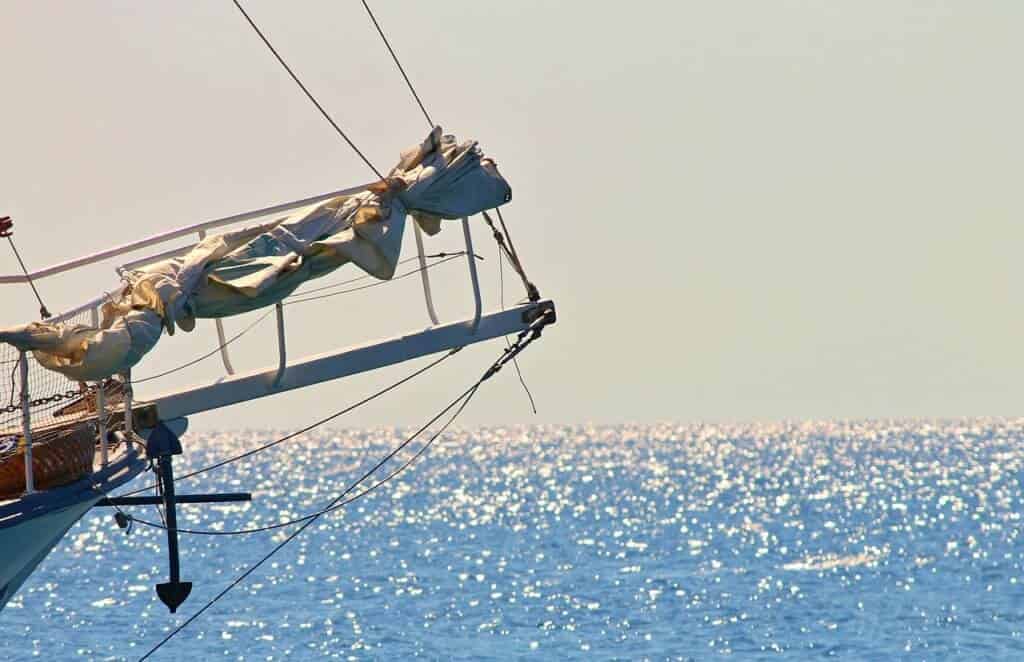
That is a lot to consider and may seem overwhelming at first. So exactly how can sail boating costs be calculated? Sailo.com offers a handy-dandy online calculator that “allows you to explore, predict, and plan costs and revenues associated with boat ownership.”
This calculator allows users to choose boat type (sailboat vs. powerboat), boat length, year built, days used, etc. to calculate the true cost of boat ownership. How cool is that?

The Bottom Line on Sailboats
Boating can increase overall health for you and your family. The physical and mental health benefits are clear.
Boating can be as affordable as owning a used car and could be a great activity for families who can find room in the budget.
Boating is a new skill that builds confidence. The focus and organization required to sail a boat can be turned directly into life skills. Boating can increase family bonds while sharing adventures on the seas.
Sailboats today are made to be capsize resistant, and sailing is a safe activity when simple safety rules are followed.
Maybe Christopher Cross was onto something after all when he sang his Sailing song:
“Sailing takes me away to where I’ve always heard it could be. Just a dream and the wind to carry me, and soon I will be free.”
Sailboating Safety and Health | A Beginning Guide Questions & Answers
The 5 essential safety devices you should have on a boat include: Lifejackets for everyone on board, A working marine VHF radio, Working navigation lights, All proper paperwork for the vessel, license and registration, An up-to-date fire extinguisher
Article Sources
- http://www.ifdsworlds2014.ca/ten-health-benefits-of-sailing/
- http://www.sciencedirect.com/science/article/pii/S1353829212001220?via%3Dihub
- https://en.wiktionary.org/wiki/shipshape
- http://www.ifdsworlds2014.ca/ten-health-benefits-of-sailing/
- https://www.yacht-rent.com/health-benefits-of-sailing
- http://www.trackingsharks.com/2018-shark-attack-map-bites/2017-shark-attack-map/
- http://www.trackingsharks.com/shark-attack-prevention/
- https://www.dorsalwatch.com/
- http://info.sailingvirgins.com/blog/how-safe-is-sailing
- http://sailboatstory.com/how-safe-is-sailing
- https://www.thoughtco.com/sailing-safety-basics-2915530
- http://www.ussailing.org/safety/
- http://www.ussailing.org/safety/safesport/
- https://asa.com/
- http://www.discoverboating.com/resources/article.aspx?id=254
- http://www.discoverboating.com/resources/article.aspx?id=254
- http://www.boats.com/boat-buyers-guide/five-starter-boats-that-are-perfect-for-the-beginner-boater/
- http://www.discoverboating.com/resources/article.aspx?id=243
- https://asa.com/news/2012/11/27/sailing-terms-you-can-use/
- http://www.schoolofsailing.net/glossary.html
- http://discoversailing.org.au/sailing-terminology/
- http://www.dummies.com/sports/sailing/sailing-for-dummies-cheat-sheet/
- http://Boatsafe.com
- http://www.boats.com/how-to/affordable-sailing-5-ways-sail-without-breaking-bank/
- http://sailingmagazine.net/article-permalink-1726.html
- http://www.sailamerica.com/resources/affordable-boating/
- http://www.silverwaters.com/budgetboating.htm
- http://www.boattrader.com/
- http://www.sailboatlistings.com
- http://www.Boats.com
- http://www.YachtWorld.com
- https://www.ebay.com/sch/i.html?_from=R40&_trksid=p2380057.m570.l1313.TR12.TRC2.A0.H0.Xboat.TRS0&_nkw=boat&_sacat=0
- http://www.nadaguides.com/Boats
- http://wow.uscgaux.info/content.php?unit=v-dept&category=virtual-safety-check
- https://www.sailo.com/calculator
